When Proctor made the decision to spend the Spring Term learning remotely, the immediate question that arose focused on our academic schedule. Would we attempt to stay synchronous in our learning? Or would that simply be too complicated with students scattered around the globe with varying access to technology? Ultimately, we realized that at our core as a school is human connection, and when we are deprived of that connection, we struggle, and a fully synchronous schedule was born.
Our academic schedule has evolved through feedback from students, faculty, and parents over the course of the spring, but its roots did not waver. Synchronous online learning can be exhausting (both for students and teachers), but we remain convinced the connection it provides is what we all need during this time otherwise filled with disconnect. Here are reflections from some of our teaching faculty on what they have experienced this spring as they worked alongside our students to navigate the challenges of the remote classroom.
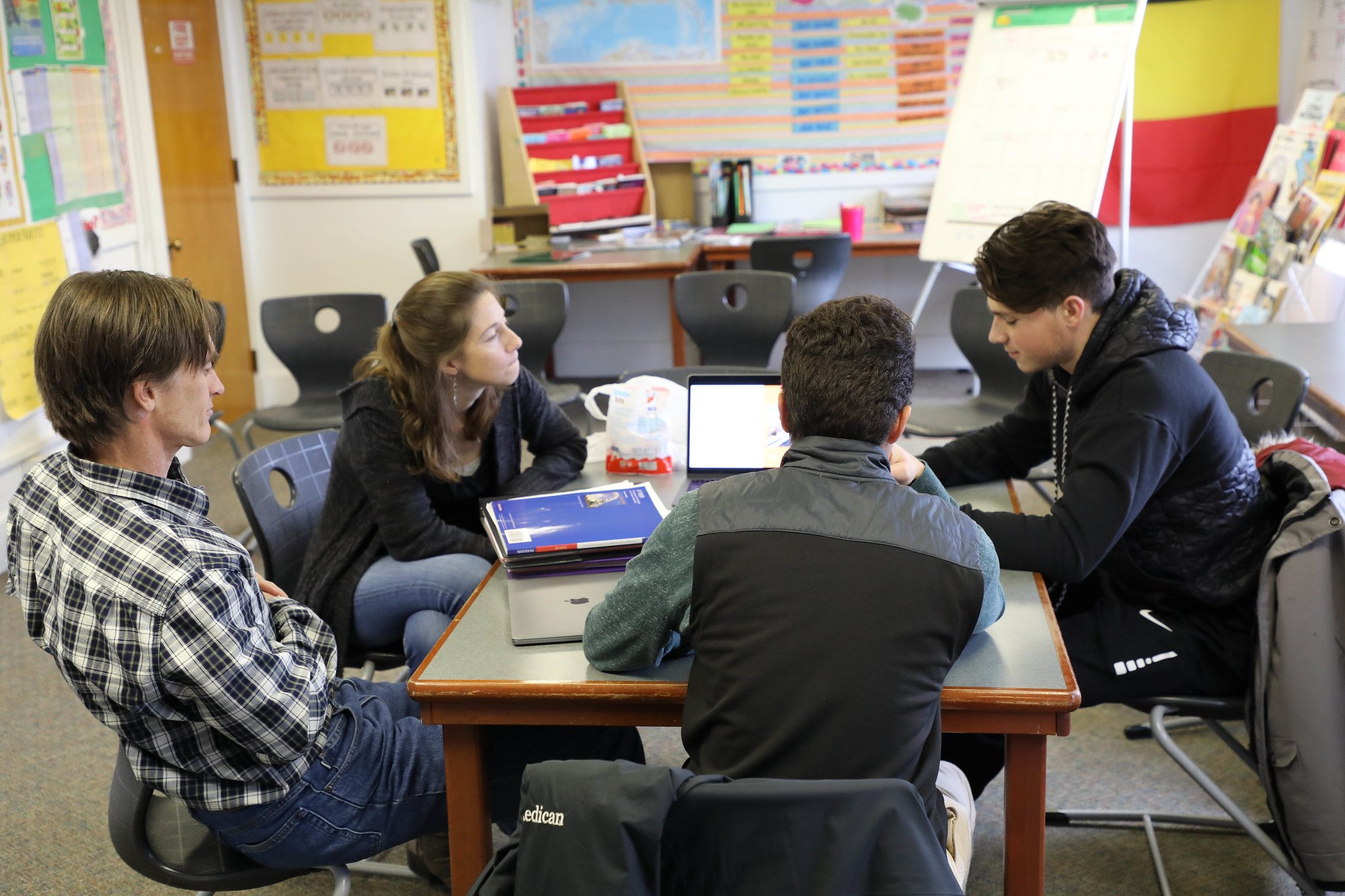
Erik Cole-Johnson - World Language Department
“¿Cuál es el animal más antiguo? La vaca. ¿Por qué? Porque están en blanco y negro. ¡Jajajaja!” (“What is the oldest animal? The cow. Why? Because they’re in black and white.” Ha ha ha! ) Each day starts with a target language joke of the day, both typed into the chat and told aloud, screen to screen. If humor is all in the timing, it’s a good thing we have high speed internet. Well, even if the humor is lost in translation, or just plain bad, a shared moment is lived. While certainly not the shared warmth as when gathered together in Maxwell Savage Room #4, there we are, seeing each other (or, in some cases, at least hearing each other when webcams get glitchy), living the awkward moments together, the silences, the laughs, the time we take to recognize a classmate who has just become student leader (congratulations Kingsley!) with hand clapping raised up to webcam level.
Synchronous learning puts us together. It gives us some of the community back that all of us miss so much. Instead of the usual beginning of class chatter so easy and effortless in all other trimesters, we re-create it this spring together, continuing the class student to student with a “¿Cómo estás?” (How are you?) and a target language question. It’s language practice for sure, and it takes time, but it’s also recognizing each student one by one (“Hey you, yes we see you, you’re part of our group, we acknowledge your presence!”) and giving students a bit of the connection with each other they so long for.
Keeping presentational aspects of class short is important, and sometimes we throw in a Kahoot or Gimkit that get the competitive juices flowing. Real time small student group conversations follow, and this is such a key aspect of synchronous learning. It’s peer to peer with a purpose. Teaching assistant and Segovian native Laura Vasquez Gomez and I go from group to group, listening in, adding comments and questions, and each time we pop in the students seem so happy to have us come for a “visit”, greeting with an enthusiastic “¡Hola Erik!” All good things must come to an end, though, and just before the closing of class we all come together once more. “What questions do you have?” “What did you accomplish today?” along with a preview of their task to prepare for the next class. One of the most jarring aspects of on-line learning for me has been the next moment, the end of class. “¡Hasta luego!” I will wave, and keep waving, as that now familiar computer/telephone high to low double-tone sounds, and each student vanishes, one by one, in a span of about five seconds. The room is quiet. I am alone. Sixteen chairs sit in the position they were left as students exited winter’s final exams. Where have all the students gone?
But as hard as those moments are, I realize how lucky I am, how lucky we all are at Proctor, to be able to come together a few times a week, tell some bad jokes, get confused and ask a question, feel the rush of racking up points on an on-line language game, discover the next part of our reading group’s novel, tell what we love or hate about the plot development, try a new word in conversation, or just share our experiences during a global health crisis. And if I ever need a pick-me-up and class doesn’t meet for another day, I just go to my students’ on-line portfolios on Seesaw and crank up their home-made music videos. My go-to is Minh Nguyen’s version of a mid 90s dance hit. Instead of “Ay Macarena!”, however, Minh sings and dances and tells what he does “¡En Cuarentena!” This is a video that can get anyone smiling.
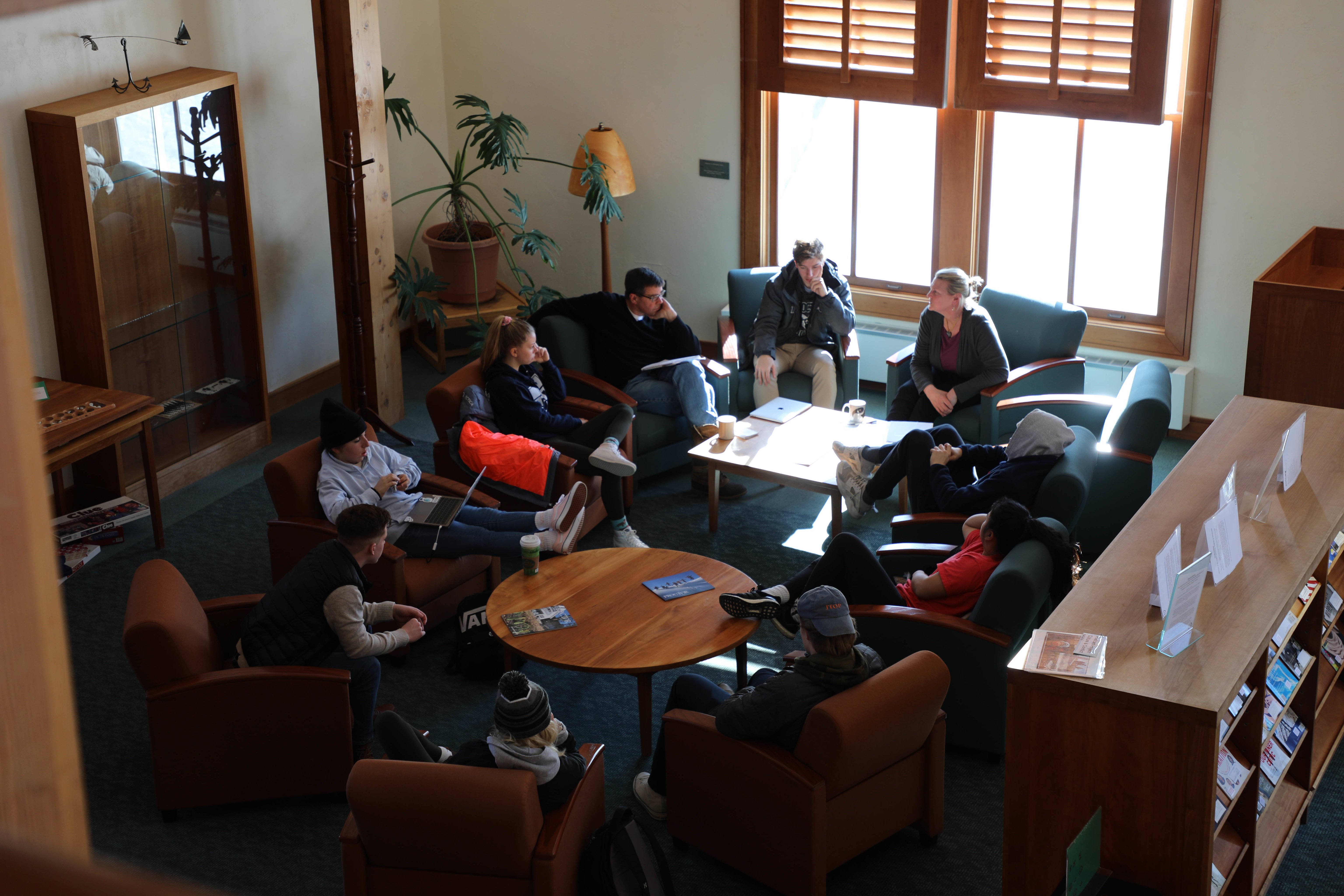
John Bouton - English and Humanities Departments
This period of remote learning has reinforced the primacy of writing as the best way to gather our thoughts. In Culture and Conflict, when we shared texts such as the PBS documentary College Behind Bars, Just Mercy, and The Shawshank Redemption, we found that a writing-based approach proved most effective in convening synchronous discussions on Webex Meetings. Teachers' scaffolding of these discussions varied, which helped make our discourse more engaging to students. We prepared extensive questions and a slideshow of involved people in advance of discussing our special edited screening of College Behind Bars; we used a combination of reflective journal writing, specific prompts, and a choice-based essay to synthesize our understanding of Bryan Stevenson's memoir; processing The Shawshank Redemption, we used a hybrid of personal reflection and curated questions. In the Literature of Endurance, students wrote short responses virtually every day to reflect on Tara Westover's Educated and their independent reading. The conversations were richer for thinking in writing before speaking.
Research on learning suggests the vitality of critical inquiry in activating engagement, learning, and transfer of knowledge, and I know from experience that both choice and time to reflect in writing before talking yields deeper investment and understanding. It was fascinating to see the fruitful written exchanges occurring on discussion boards in MyProctor or a class Google Doc, and reflective writing also enriched the virtual interactions on Webex Meetings or in small groups. A highlight of the term was being able to drop in to small-group discussions and see everyone engaged in conversations about the book. Their thoughts were crisper and more precise for having written about it first. I used writing in virtually every class to promote students' processing their thoughts, engaging the text, and learning more from revisiting their reading and one another.
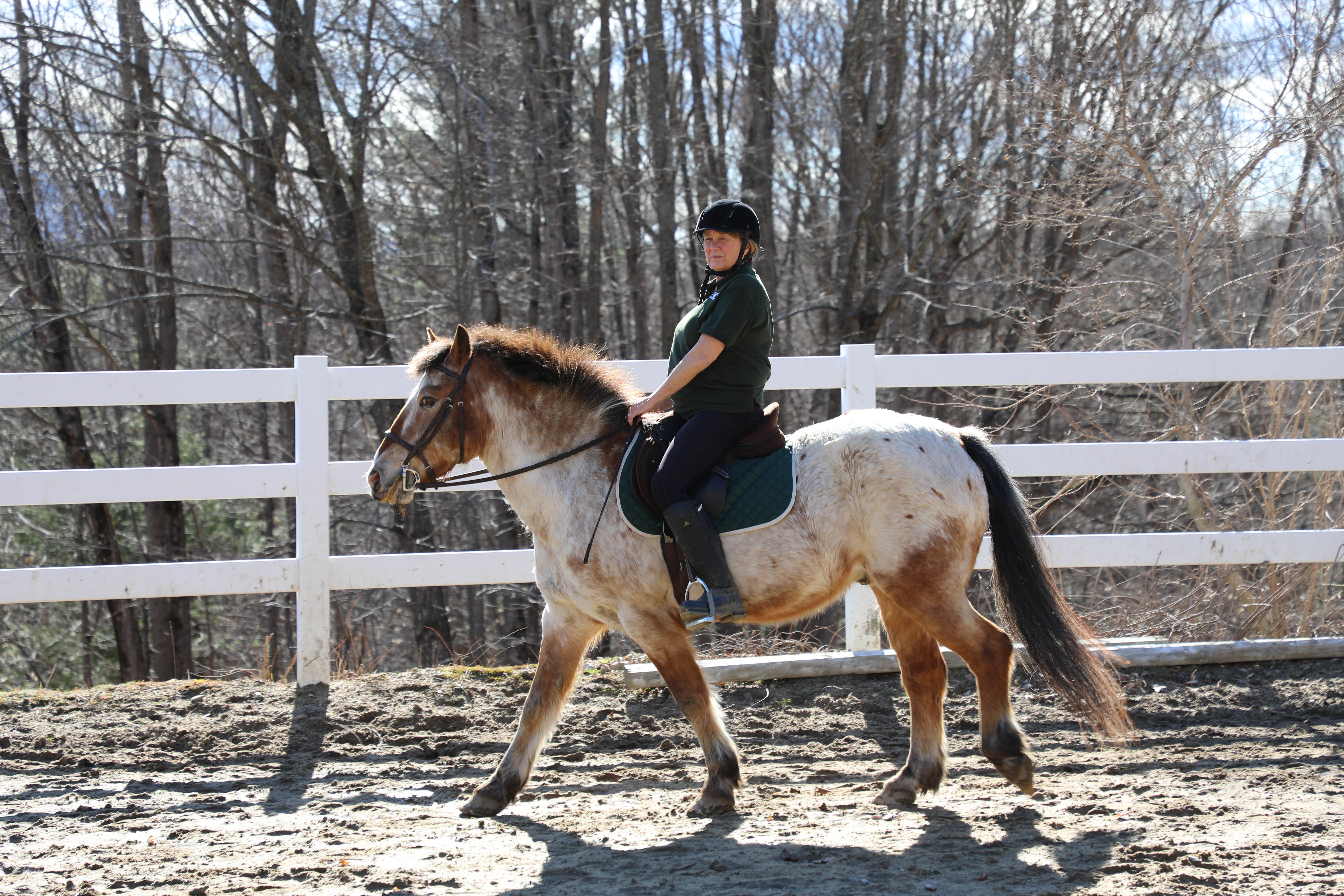
Terry Stoecker - Social Science Department
I have found that the synchronous meetings that put us into real-time with our students, might at sometimes be a little taxing, but more often than not creates a rich teaching and learning platform filled with opportunities to engage deeply. We can see them. We can get a sense of our students' overall well-being. We can speak to them in the moment with suggestions, adjustments, and praise.
When sharing, I love starting with one student as I look for an answer to a question or a conversation starter and then have that student pick the next person to share. It's fun to do this kind of quick, like popcorn popping idea and responses. Did you know that if you hold your hands up to your camera with the idea that your fingertips are touching the fingertips of the others in your class, that there is an actual visceral feeling in your fingers and palms? The sense of connection is pretty cool. And yet, I’m not going to lie, I miss being in the room with the classes I teach while remaining ultimately grateful for the experience.
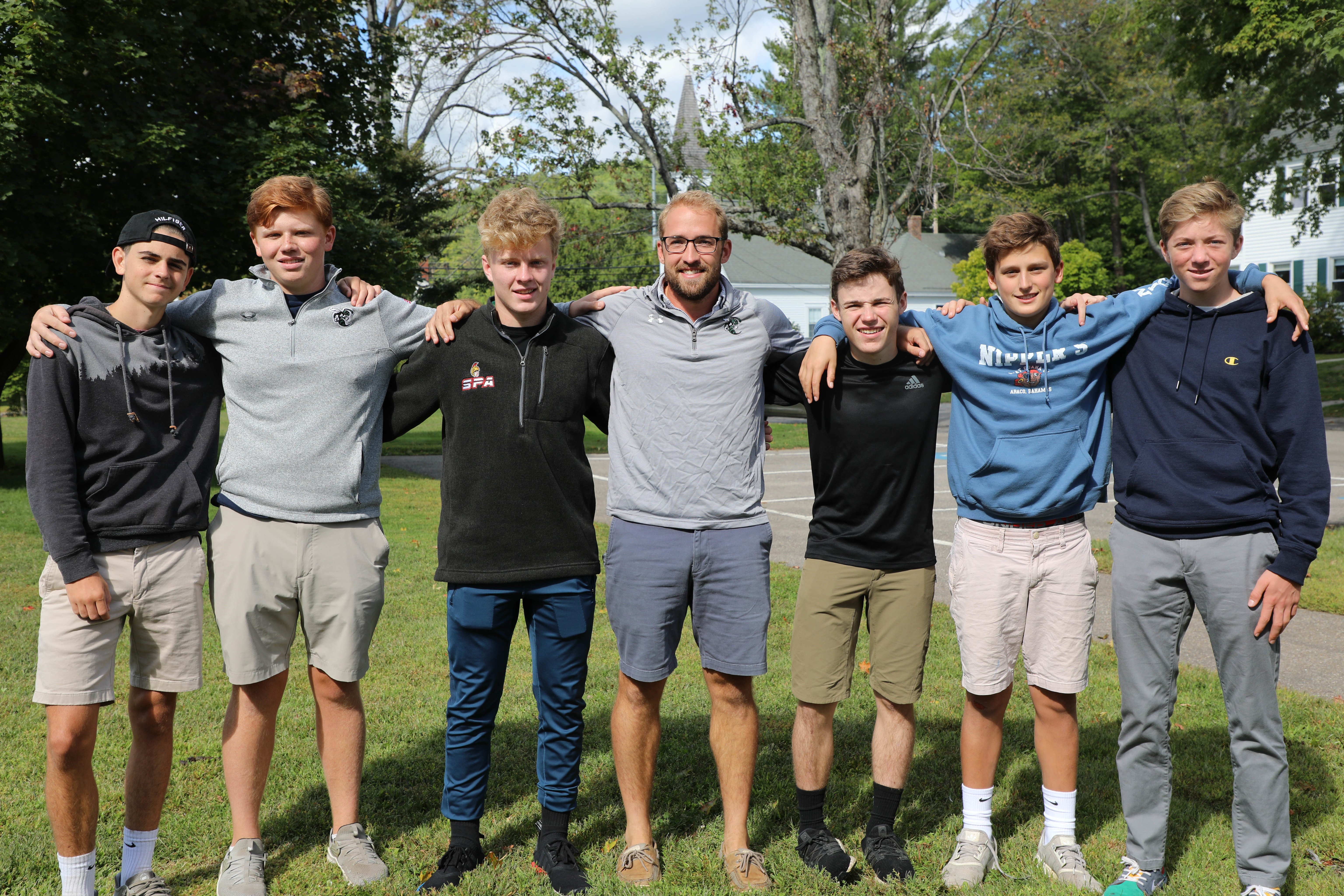
Kyle Connolly - Social Science Department
When the decision was made to create a synchronous schedule for the fall term of remote learning, I was a little worried about the amount of time we would sit in front of a computer. My initial reaction was that we could probably adjust the program so that we could have more flexibility in our schedules. But as we got underway with the term it became evident that the synchronous schedule was the best part of this whole situation. Don't get me wrong, back-to-back-to-back classes on a computer are draining, and I don't feel the same rush that I get from being in a classroom or around my students, and I miss the banter of the Humanities Office.
That being said, spending time in conversation with my students is still what fuels me. I teach because I love the human connection of it. Teaching through a computer screen and camera is no replacement for the real thing, but it is enough to make me yearn for the days when we will be back in a classroom together. The synchronous schedule lets me see their face, hear their voice, and recapture some of that joy of the human connection. Humanity is what makes the Proctor community; I am thankful that we have maintained a high standard for what really matters most.
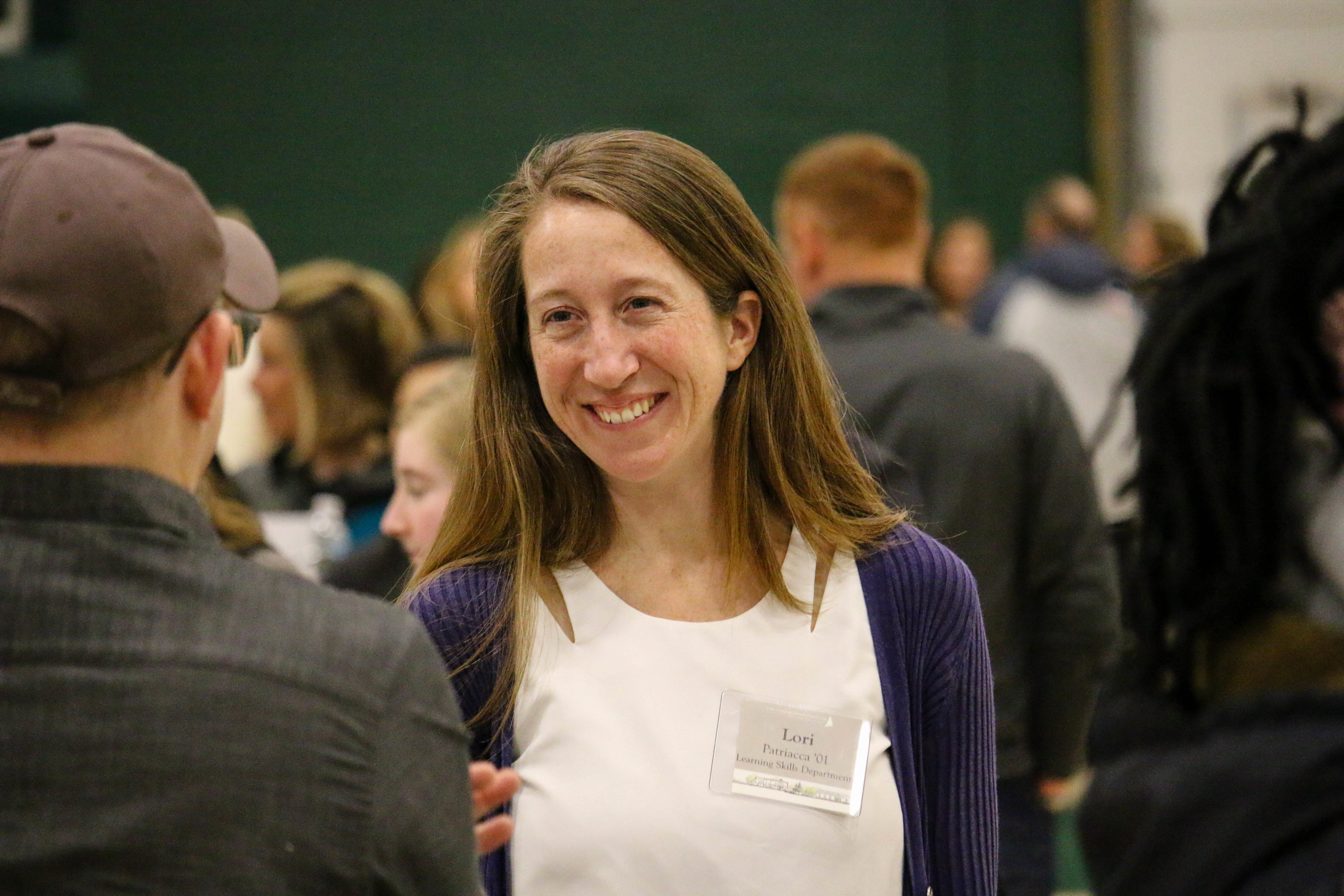
Lori Patriacca ‘01 - Learning Skills Department
I have loved the ability to have one-on-one conversations with my LS students about their reading and papers in particular. They are so much more willing to think deeply, share their ideas, and be vulnerable by taking chances with those ideas in this setting. The online learning model Proctor has adopted is allowing Learning Skills teachers to continue working on academic skills with students as well as executive function skills. It is giving students the needed structure in a really chaotic time. Proctor is based on relationships and investing in the synchronous model keeps the web of relationships intact. It also makes it more predictable to guide students when they need extra help or to connect with a classroom teacher because I know when those teachers will be available.
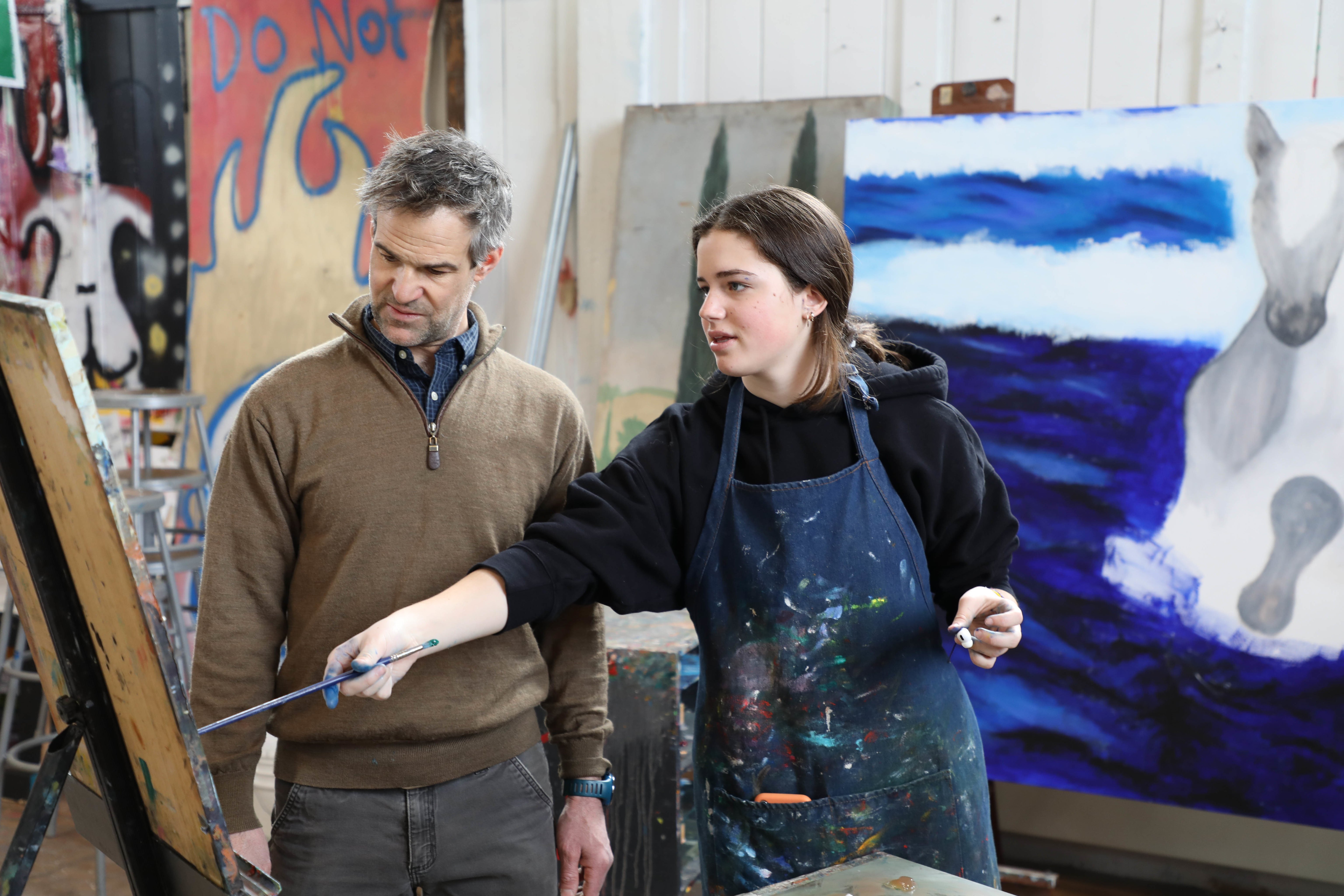
Corby Leith - Art Department
Doing, making, exploring art is all about taking risks and exploring…the challenge for me as an art teacher has been in the tangible. I am not involved through decision making or witnessing the decisions being made by students in the moment that I otherwise would be in Slobumb with them. Discussion and critique is purely through images of a specific moment. We continue to nourish and promote art and art making. Some students, believe it or not, are finding more success through less distraction and more solitude. Others need and long for social interaction, especially our new students.
This time is not ideal and does not replace the experience of being in one room working together, but I am massively impressed with the motivation, discipline and work ethic of each and every one of our current students. The platforms we are using through technology have shown us some of our weaknesses, or at least what I have ignored to incorporate into the classroom. These technology platforms will change, but the importance of using them and the benefits of using them will not change. Again, please know I cannot wait to have our students back and witness their process and their work from across the room, and as important, have our students witness other’s work. Seeing the movement, the texture, the application, the detail, the drip, walking around the easel or the anvil or the spill or the fire or the pure sensory bliss of the surface angle be it an oil painting, or walking around a steel sculpture or engrossed inside an Art Installation is all priceless. In art at least there are massive benefits from both solitude and togetherness.
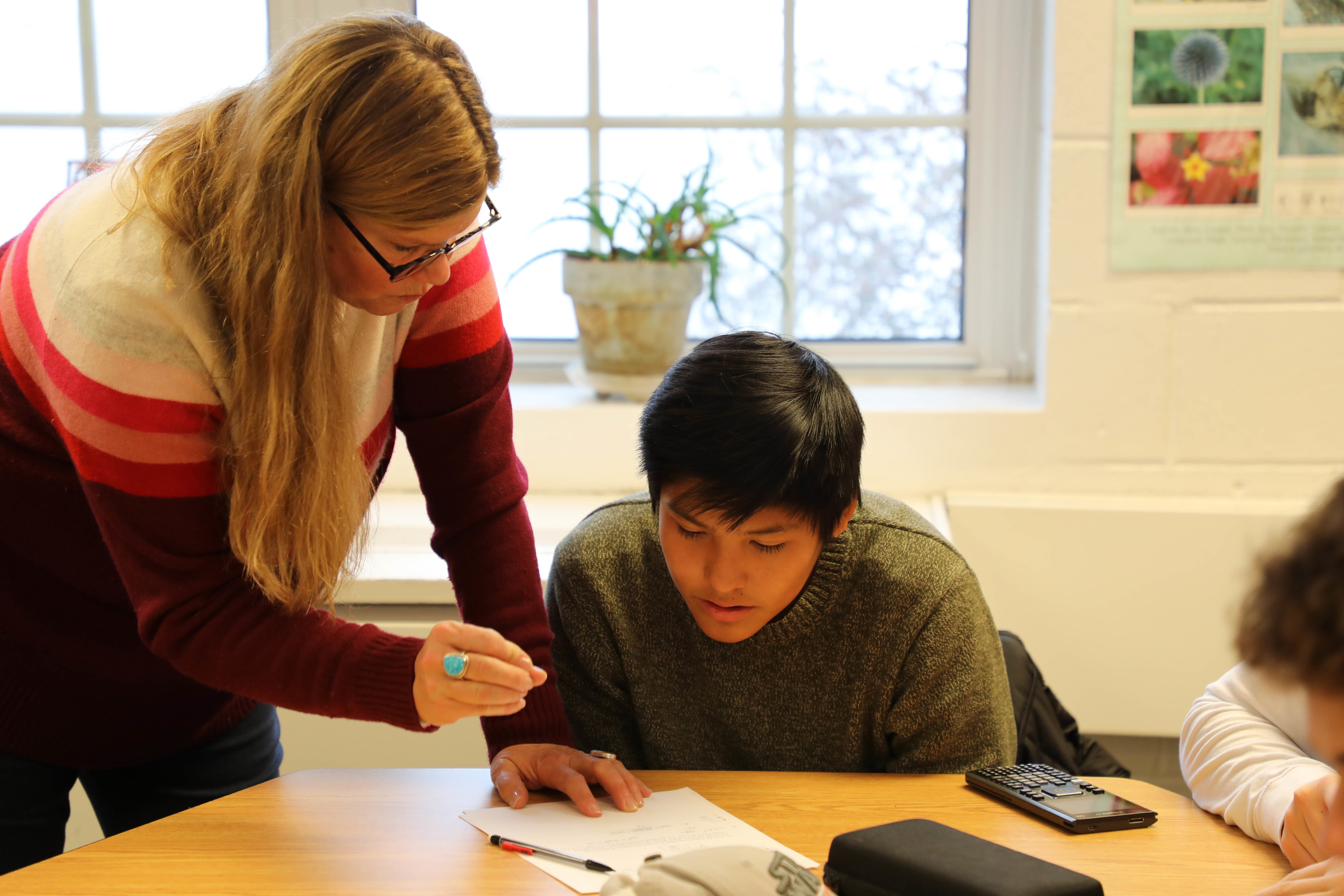
Patty Pond - Math Department
Lindsay Brown and I have worked together to make a plan for Algebra 2. We spent a lot of time mapping out the entire term before it started and it became clear by the end of the first week that we were going to have to adjust and we have done that about every ten days or so based on how the students are doing emotionally and how much we think they can handle. We told our students from the start that they would be graded just like we always do, (number grades for effort on daily practice problems, quizzes, and lab write-ups are graded numerically). The only thing different is that at the end of the term, it will become a P or an F.
Our plan from the beginning was to make each day seem intentional to give structure and meaning to their days. If they have to show up for class, they should feel as though they have accomplished something.We start in Webex Meetings so that we can check in with students and see them as a class. We teach a short lesson using Smart Learning Suites, and then students head off into Webex Teams to work in groups on practice problems due at the end of class. By making a majority of the work completed in class, students are engaged and working and really asking good questions that lead towards understanding.
Overall, I have been SO PROUD of my students. They come to class every day (we have only had a few students miss class this term), and in every instance, students followed up with me. I mean, they have just been terrific about pushing themselves to stay engaged and to do their work. Not everyone is hitting out of the park, but they are definitely showing up and I really appreciate that.
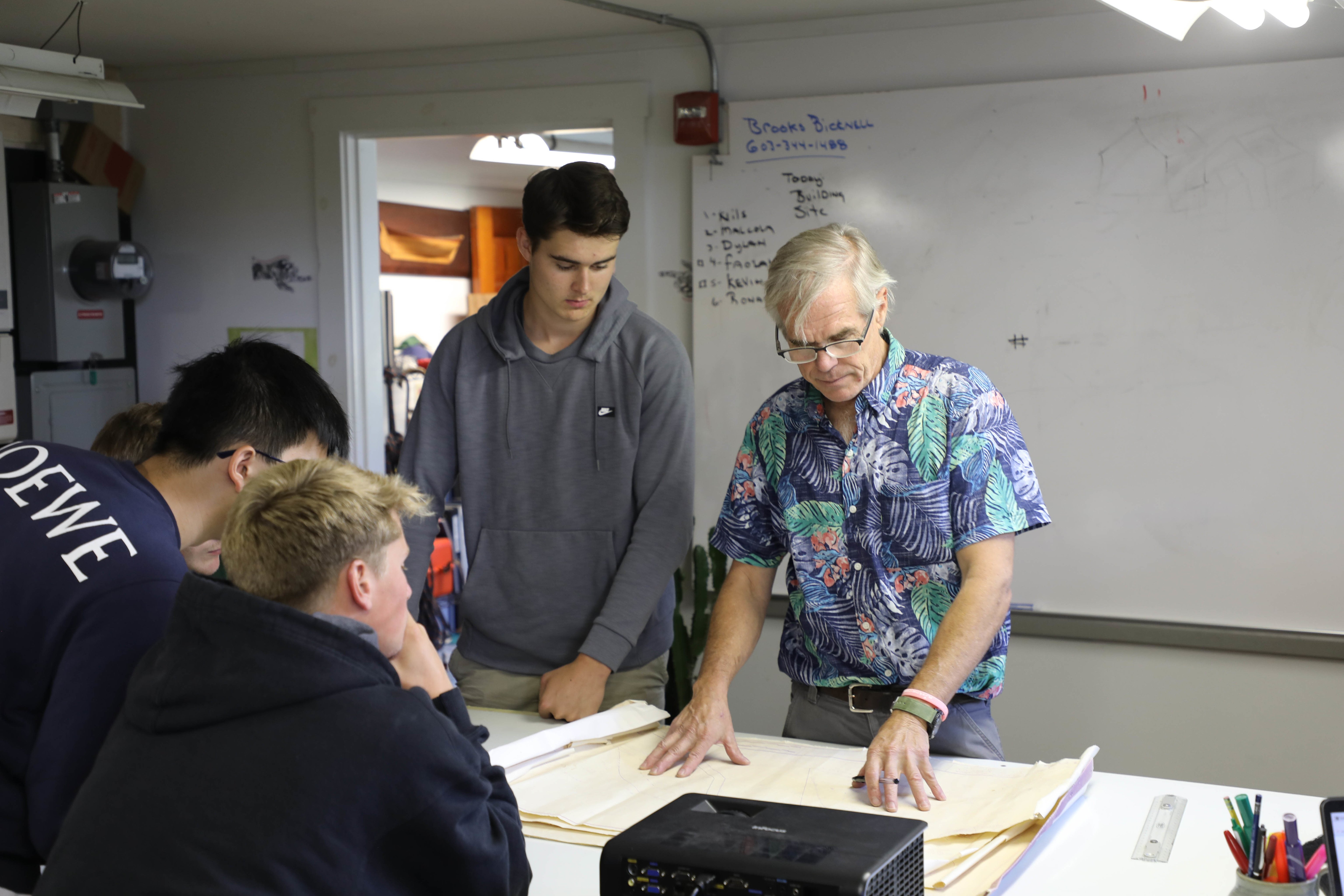
Brooks Bicknell - Social Science and Math Departments
The shift to synchronous, remote learning has forced me to invest in my own technical skills in order to pull off an effective class: using Notability, synching audio and video, ensuring a multi-sensory approach to learning history by interweaving music, art, and film into both my delivery of content and independent student projects. It was been so good to have those face-to-face check-ins with students, to answer their questions, see how they are doing, be sensitive to their workload in other classes, and adjust assignments to best fit into an online learning format. I have been really impressed and pleased with how well the students have hung in there and given it their best shot.
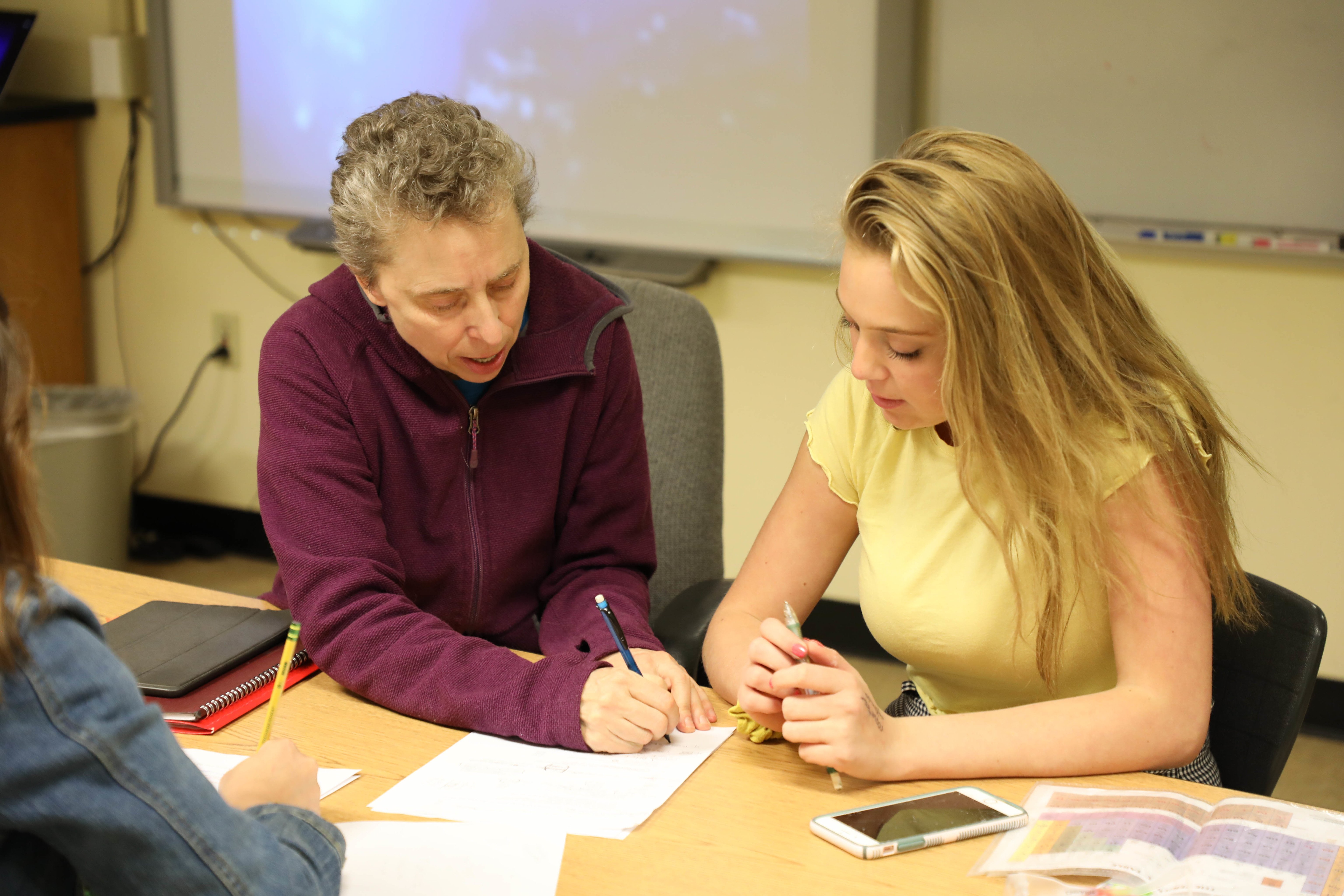
Sue Houston - Science Department
This spring has not been difficult at all, which I suppose does not fit into the narrative of overcoming challenges very well! Already knowing the students so well, it has been quite delightful to maintain the connection with them via "Hollywood squares". I have very much been enjoying meeting the kids each day, and the less hectic schedule has allowed for a more relaxed way of being with them.
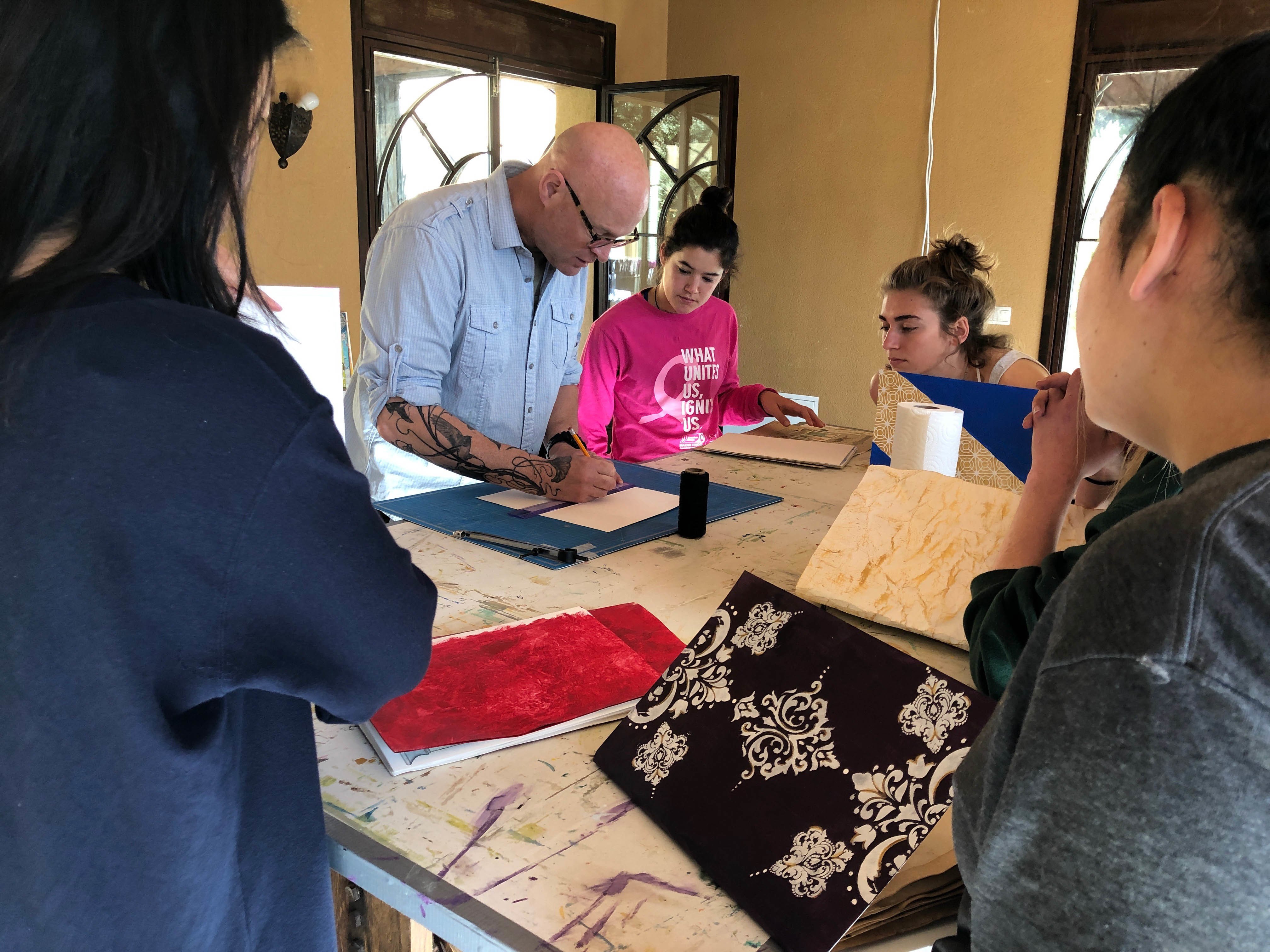
David Fleming - Art Department/European Art Classroom
Proctor never hesitated to follow the diverted stream. Once we went down that stream, we even changed horses in the middle many times. I’m proud to work with a large fearless team delivering on what we say we do. Because my art history class is a lecture-based class with many visuals and embedded video shorts within Keynote or Powerpoint, it took me a lot of time and quite a bit of effort to convert them to screen recordings. How do I take what I normally deliver face to face and record over it and send? It was odd to look at my live recording with the seconds, and minutes ticking by as I voiced over my slide shows. There were no faces watching me but I still needed to try and be funny, serious, entertaining, guiding as I clicked through Renaissance Florence, Rembrandt, and towards the modern age. It’s like looking in a mirror and talking to yourself for 40-50 minutes, knowing that no one is listening to you but they eventually will. You tell a joke and no one laughs, no yawning, no nodding off. It was unnerving. I was noticeably nervous, I think, for my first one on Gothic art. I kept saying “don't be ridiculous”, I mean no one was listening. With having all my work and years of study, my “intellectual property”, now virtually recorded, I hope I’m still physically needed. Maybe I could sell these recorded mini-movies to the highest bidder or to the History Channel!
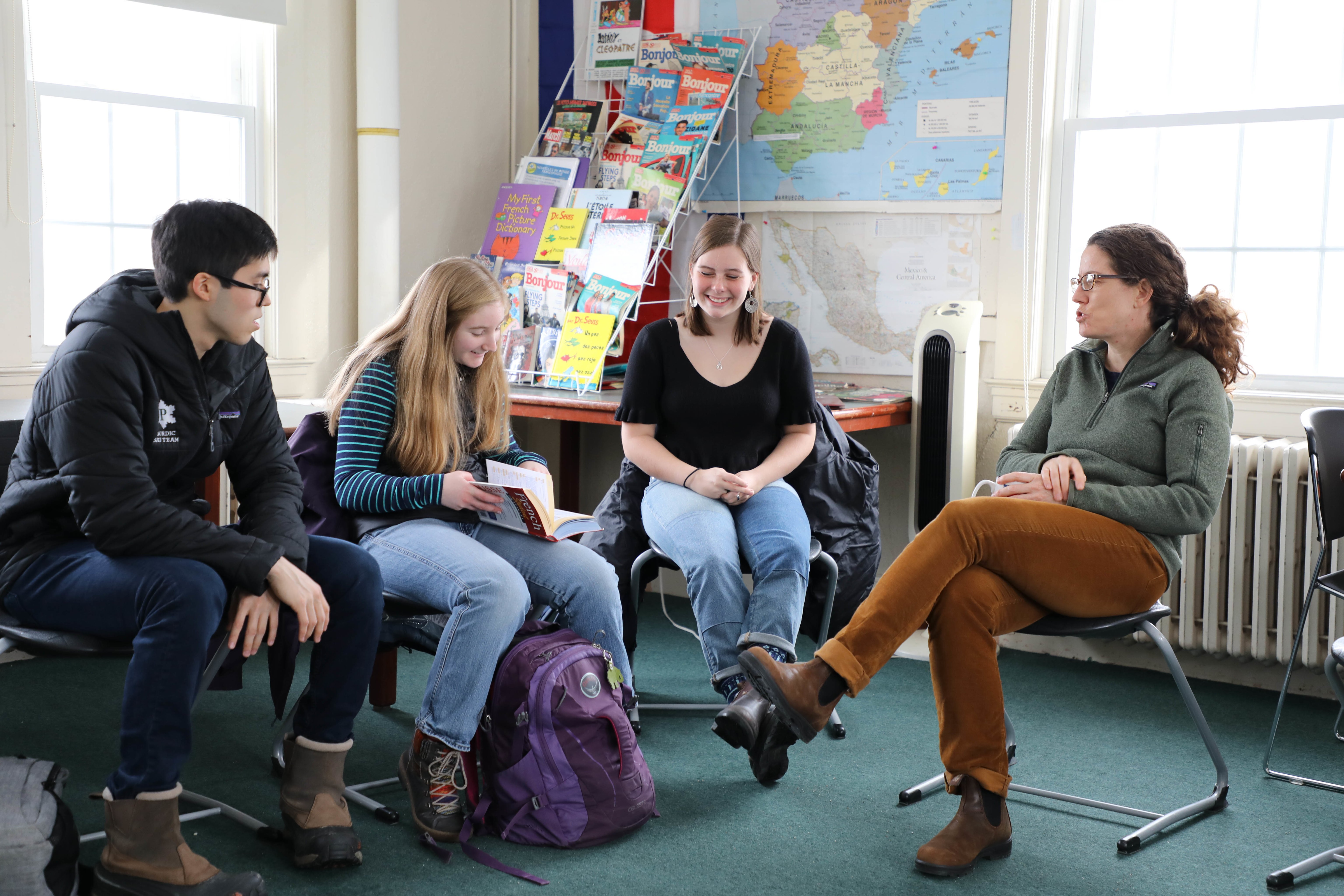
Sarah Daney - World Language Department
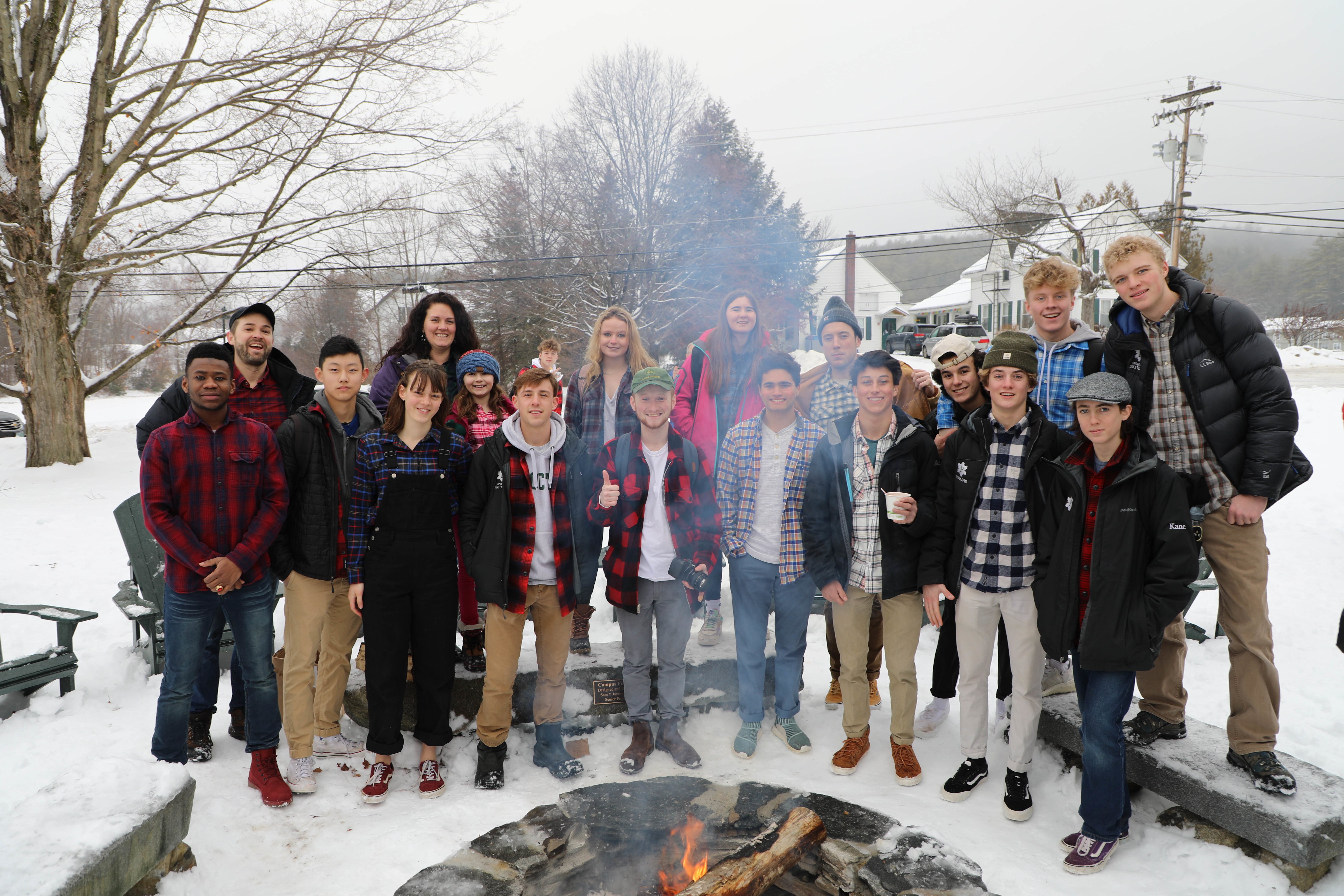
Mark Tremblay - English Department
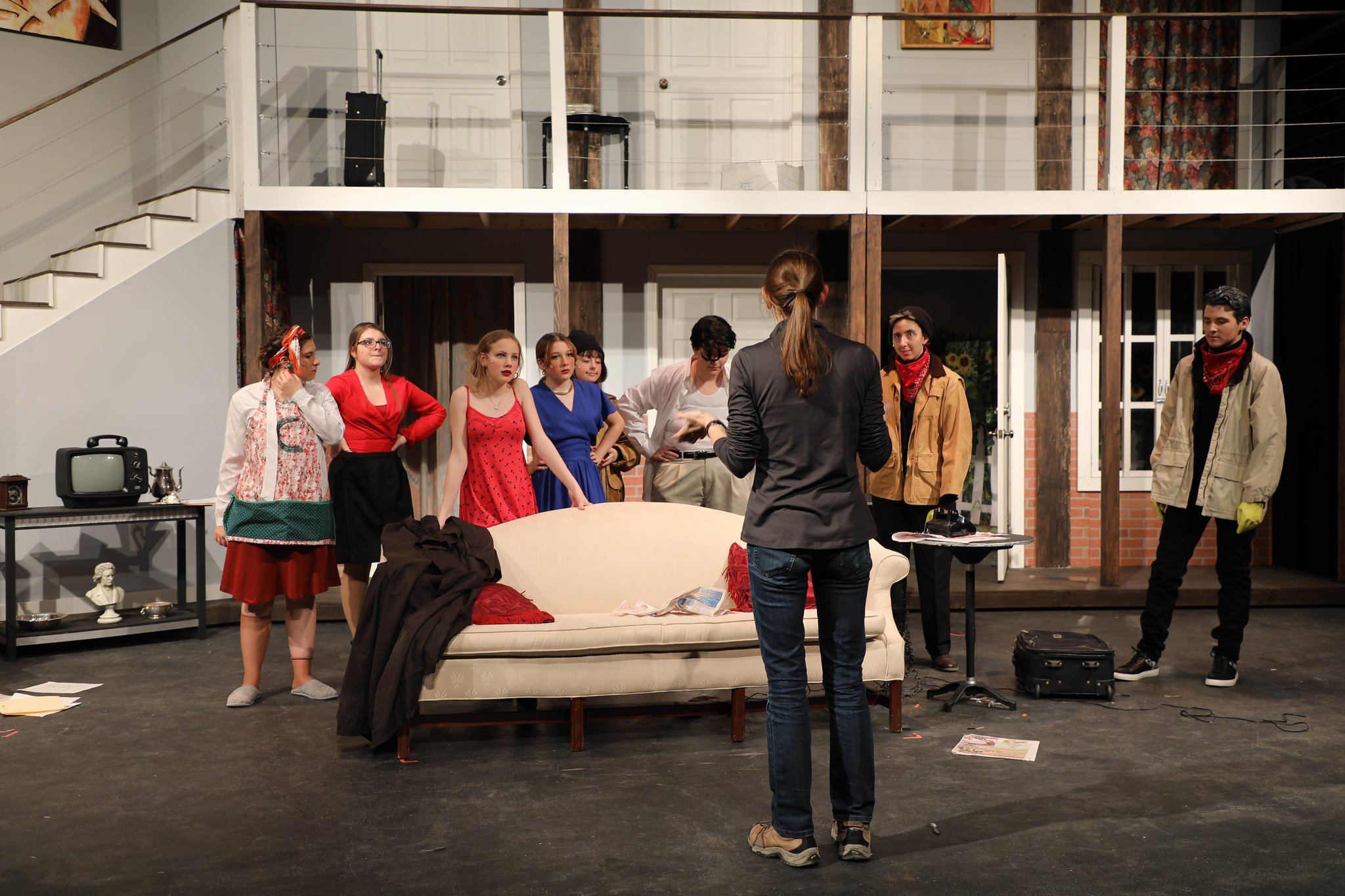
Jennifer Summers - Art Department
In my improvisation class, I thought that the online platform wouldn’t work at all, but I found there were several improvisation games we could still play as a group online. If we were not all meeting at the same time, there would be no interaction and these improv games wouldn’t have been possible at all. The students really got into some of them and it was great to see them get up out of their seats, and really try to interact with each other via Webex. Being silly or just getting up and stretching at the beginning of class as a group was a welcomed relief in this crazy online world.









